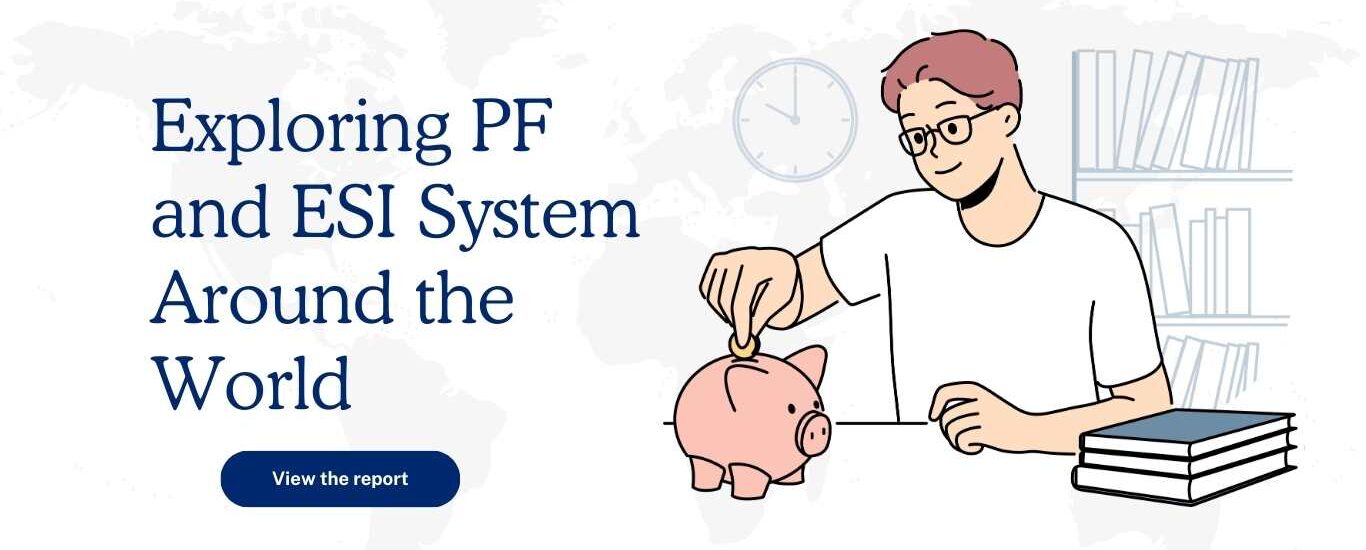Introduction:
Employee Provident Fund and Employee State Insurance can provide us with a deeper & valuable insight into global social security policies. Studying the EPF and ESI helps understand companies’ diverse structures, benefits, and administration worldwide.
First, let’s understand about the EPF and ESI:
- Employee Provident Fund
An employee provident fund is basically a retirement saving scheme that employers offer for their employee’s benefits. This is the portion of employees’ income that they can later use to support themselves in the future. This is a mandatory program which funded through the contribution of the employees and employer which is calculated on the basis of the employee’s gross salary in a fixed percentage of 6-6% each. In India, EPF is covered by both the Private and Public sectors except those who do not come under the NPS (National Pension Scheme).
2. Employees State Insurance
ESI or Employee State Insurance is a social security and health insurance scheme in India that is made for the employee’s benefits. It is contributed by the employer and employees both in their described percentage for the employer the percentage of calculation is 3.25% and for employees, it’s 0.75% and it is done on the basis of the employee’s gross salary, apart from that it also covers various benefits like medical benefits, maternity benefits, disability benefit and welfare of families as well.
Contribution of EPF & ESI at the Global Level:
- Centralized and Decentralized Models
- In India both the EPF and ESI systems are controlled by the Central Government. The EPFO (Employee’s Provident Fund Organization) manages the working of EPF (Employee Provident Fund) scheme and ESI (Employee State Insurance) is controlled by ESIC (Employees State Insurance Corporation). They both set rules and regulations according to standards across the country. Because of this India falls under the centralized model.
- In light of the decentralized model “The United States” follows it in its social security administration. In the USA every state follows its own implementing criteria for PF and ESI according to the Worker Compensation Scheme.
- Legislative Framework
- Comprehensive Legislation: This comprehensive legislation follows in “Canada” in which they create Canada Pension Plan (CPP) and Employment Insurance Act (EI) which works as EPF and ESI at their national level. This law set up the contribution rates, benefits and clarity nationwide.
- Fragmented Legislation: Fragmented legislation gives the insight about how “Germany” use this for social protection which includes pensions, health insurance and accident insurance. They also provide developments of company’s federal structure.
- public-Private Partnership
- In India EPFO and ESIC provide the regulation for social security system which is applicable for both private and public sectors. Read new rules of EPFO applied from 1st April 2024
- In Australia it follows the superannuation system which is a mix of private and public sector involvement in this government mandates the contribution of the superannuation fund which is regulated by Australian Prudential Regulation (APRA) in this employee have the flexibility to choose their fund and fostering competition.
Conclusion
By exploring all these points gives a enhance study of how EPF and ESI worked at global level and it also inspires other countries to bring any suitable changes in their system. It also provides a deeper insight of how other countries follow social security and contribution scheme.


